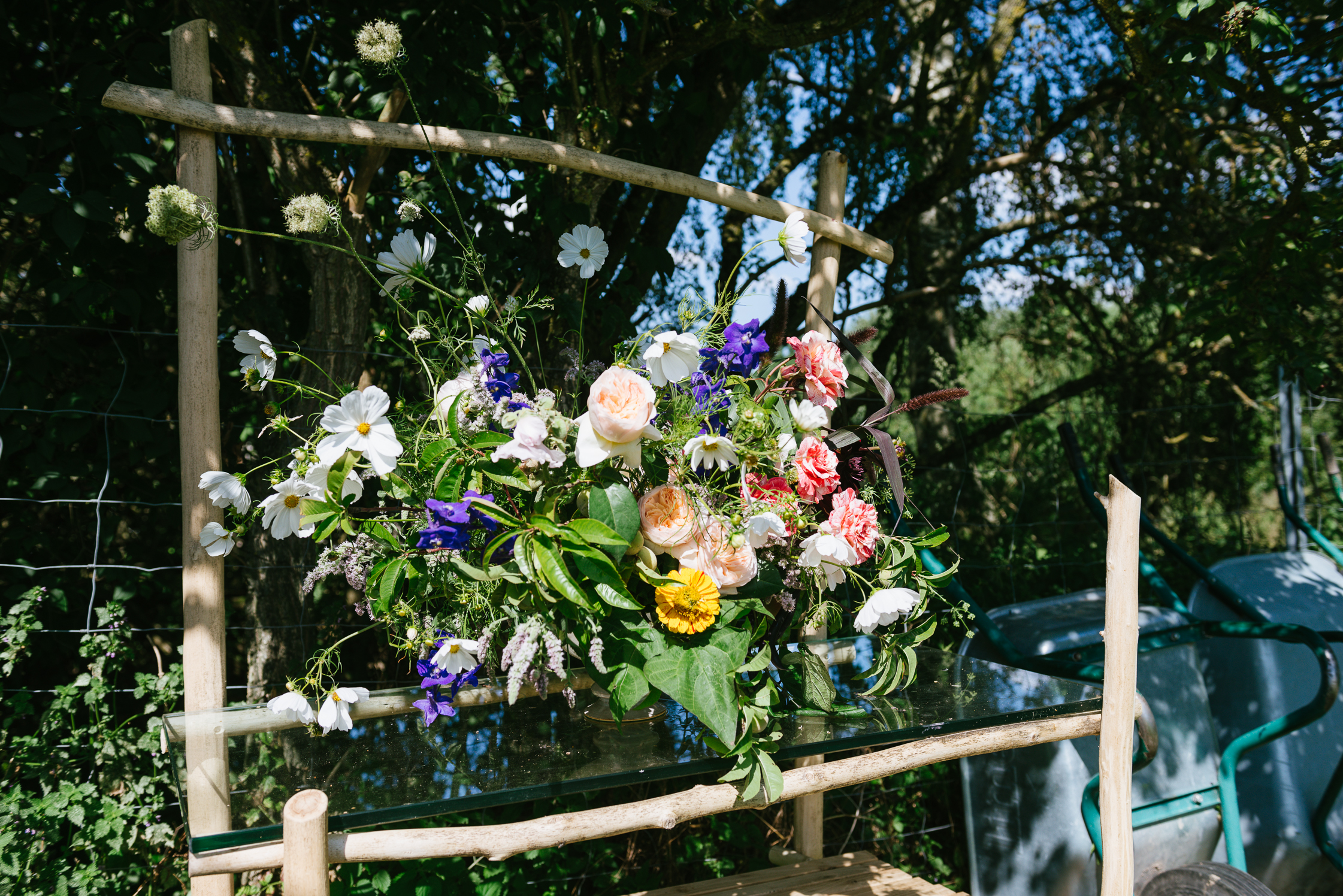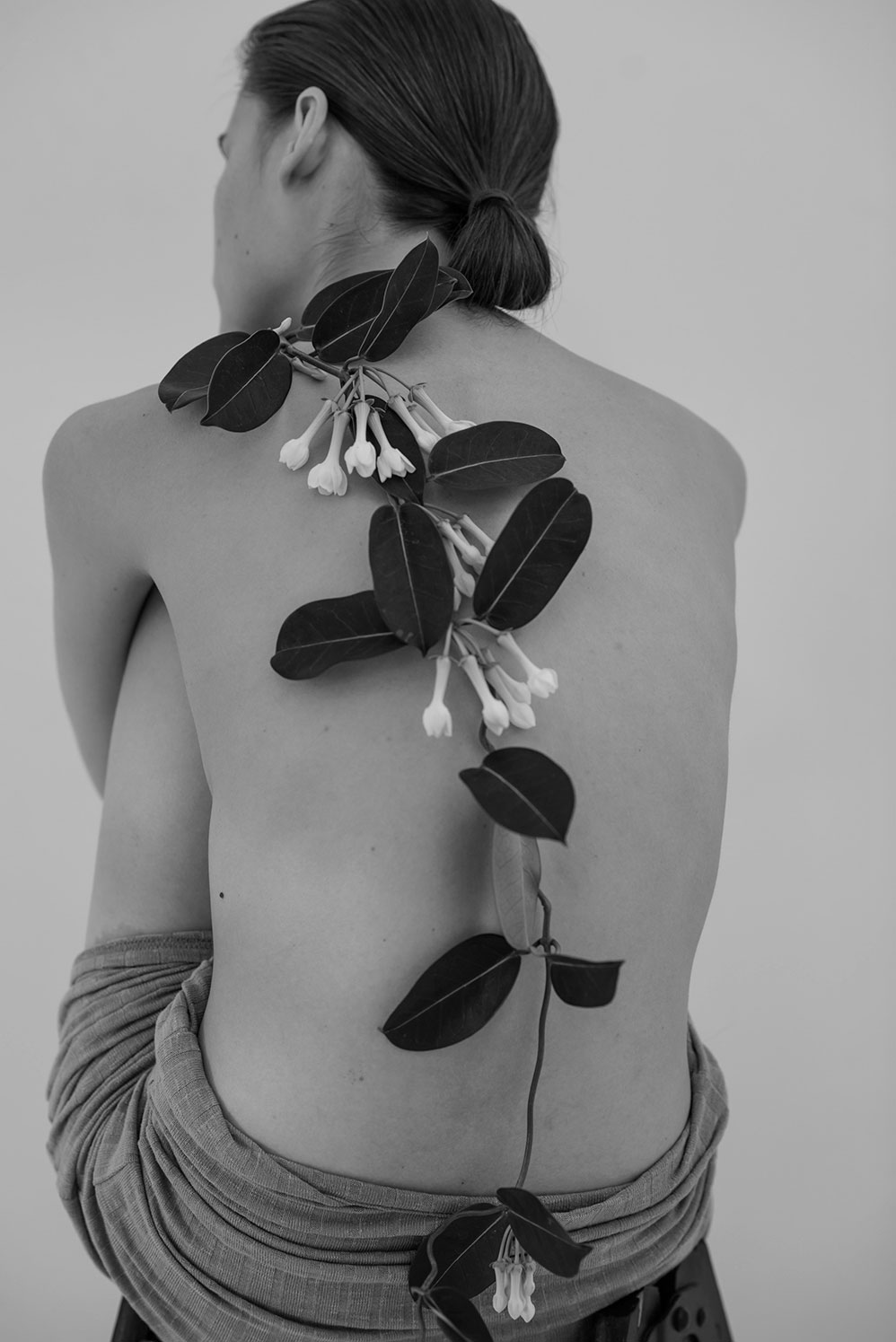What’s in a name? Well, often a whole brand identity. While we all might dream of heady backstories when founding our passion projects, Florist Ruby Barber, founder of Berlin’s Mary Lennox, has a storybook tale behind hers.
Mary Lennox is the orphan heroine of Frances Hodgson Burnett’s The Secret Garden. Sent from India to live with relatives in Yorkshire, England, she rejuvenates an overgrown garden and with it her estranged family. For Ruby Barber, originally from Sydney, the childhood classic would follow her into adulthood, “I never would have guessed that The Secret Garden would lead to anything more than me loving the story,” she says. “I used to dress up as Mary Lennox at book week at primary school and I used to listen to the book on tape before I went to sleep. I didn’t really think about it for a long time until I moved into my dad’s old studio and art gallery. It was on the corner of Mary and Lennox street in Newtown, Sydney. It was around that time that I was starting the business and I was looking for the perfect name, and it was right there! The underlying message of the healing quality of plants and flowers is something I believe in and I also really like Mary. In the beginning she’s kind of sour, not everyone really gets her but she really comes into her own and the garden helps her get there.”
Take a peek behind the scenes of Mary Lennox in Werde Magazine where you can follow Ruby’s DIY bouquet tutorial. It’s all part of our collaboration with Werde that is founded on our shared appreciation for working creatively with nature.

“When I first moved to Berlin, I was obsessed with finding proper garden roses. I had eyes and ears all over the city trying to hunt down something a bit more interesting than the imported roses available at the flower market,” says Ruby, “A florist friend was visiting from Australia and spotted some unique roses at a produce market. I followed the trail and I was so happy to find Connie’s farm in the end. I don’t think I’ve seen one more beautiful closer to Berlin. It’s so nice to work closely with local farmers.”
“If you look the right way, you can see that the whole world is a garden.” — Frances Hodgson Burnett.
Over time, the business has, much like its namesake, come into its own—three years ago, Ruby moved Mary Lennox to Berlin. Despite the challenge of starting again from scratch, her interest in European botanics had been piqued by a trip during the city’s greenest time of year, “I visited Berlin in the summer and I was really taken by the natural landscape. Flowers and branches I was used to only seeing cut at the market in Australia lined the streets and the greenery was so abundant and wild.” Today, Mary Lennox is headed up by Ruby and co-florists Olivia Beattie and Paola Ravagni from their studio at Am Lokdepot (situated very fittingly between the two green swathes of Gleisdreieck Park and Viktoria Park), it’s part of the leading set of florists in Berlin who, like many of their international contemporaries, are extending the potential of the field. Even the term ‘florist’ seems to lack the semantics of the role today. Most work beyond flowers, tending to the full garden of plants, vegetables, and herbs. With a remit that includes toying with negative space, working in mixed media, creating fleeting installations—you’d be hard-pressed not to designate it an art form. Though, when asked if she sees herself as a flower artist or florist, Ruby’s pragmatic response belies the merger of business acumen and creative eye that the path calls for, “Neither and both? First and foremost, I’m a small business owner and after that I’m somewhere between a consultant and a stylist in the field of botanics.”







“Sometimes our work is romantic and wild, other times it’s minimal and modern.”
Though the chronology of the narrative might suggest the seeds were always sown for floristry, Ruby maintains it was unexpected. “I was always drawn to creative pursuits, but flowers weren’t a huge part of my life until I started to go to the flower market. In the beginning, I used to go to Flemington Market in Sydney with my friend and it was really just for fun. We started picking flowers up for friends and family and it snowballed from there. Our operation was really simple; We went to the flower market every Friday and delivered the bunches we’d picked up wrapped in brown paper. We realized pretty quickly that we needed to refine our service, and next thing I knew, I was enrolled in a floristry course and looking for work experience,” she says.
Ruby’s work with plants and flowers takes her beyond Berlin, heading to Hamburg or as far as New York for projects. In the time that we follow her, works include an installation at Berlin’s Atonal techno festival (where masses of lilies stood in contrast to their industrial setting in a former power plant) to collaborating with photographer Amira Fritz, with whom she creates ethereal, still-life analog shots. “Every project is completely different. Sometimes our work is romantic and wild, other times it’s minimal and modern. We’ve never had the same brief twice. We’ve created sets, taught workshops, made pop-up flower shops, had installations commissioned, sourced unusual plants and flowers, styled fruit and vegetables. It’s my favorite thing to travel and meet new suppliers and find new produce to work with. We now have an amazing network for growers and suppliers all over the world! Plant hunting has become a true hobby.”
“It is really so fast. I rarely spend more than a day with something I create.”
Wherever they find themselves, every Mary Lennox day begins at the flower market, “We are on the move almost all day, installing projects, sourcing produce. An hour at the computer is considered down time!” These are early mornings in the very literal sense: Rising at 4AM, florists seem to operate in a parallel time zone. Beyond this, the very pace is also one that constantly hinged forward, always in the midst of creating the ephemeral works, where the lifespan of the cut foliage and flowers is a as brief as the insects that would have frequented them in their former life. Though Ruby admits she is prone to nostalgia (despite the colors, melancholy tends to set in during fall: “I know it will be a while before I can work with all my favorite things again”) her profession directs her gaze forward. “It is really so fast. I rarely spend more than a day with something I create and never more than three days with each flower or plant that passes through my hands. I think about the flowers for days after I’ve given them away: How are they doing? Is there enough water? Are they fulfilling their purpose?” she says “but, I also know that there is a point in the not too distant future where everything I’ve been working on will be thrown away. I have to be at peace with the fact that nature is unpredictable and short-lived when taken from its natural environment. You can’t take the surprises natural produce throws at you too seriously.”
Optimistic Decay
An Installation for Juan Mendez at Berlin’s Atonal Festival
“Juan Mendez approached us to help him execute the staging for ‘Optimistic Decay’, a showcase to celebrate and mark the closure of the Jealous God label as part of the 2016 edition of Berlin Atonal. Hundreds of stems of lilies were used to create the set for the show and there was a thick scent of fully bloomed flowers in the air.”
“Working with natural produce in such a big and industrial space is great, the contrast between the environment and botanics makes the plants and flowers seem almost alien. The lighting also makes really interesting shadows and silhouettes. It’s a really unique context to work in.”
Today, she works with the same local suppliers she sought out from the beginning that sustained her practice back home. Moving from balmy Sydney to Berlin called for adaptation to an entirely different flower culture—from small-scale farms to the blooms from Dutch growing powerhouses that make up the bulk of produce and tide the European market over the winter months. “I like to work with what is most beautiful in the season,” she says, explaining that though she has learned to enjoy working with imports when the season dictates, she stays true to her slow-grow beginnings. “In Australia the seasons all blur into one and you’re spoilt with beautiful flowers all the time. Most of the produce at the flower market is grown by local farmers. It makes everything feel a little bit more special and unique because you’re more likely to come across interestingly shaped stems and special imperfections. Here, the culture seems more traditional in general, standard imports are still very popular and the ‘mixed bouquet’ reigns supreme. My personal taste is somewhere closer to the style in Sydney, which is a bit more minimal and clean with a big focus on unique varieties.”
“The contrast between the environment and botanics makes the plants and flowers seem almost alien.”







Following Ruby on one of her regular trips out into Brandenburg, the pastoral region that envelopes Berlin, we arrive at a very fragrant rose farm. Calling it simply “Connie’s Farm,” Ruby explains “When I first arrived I was obsessed with finding proper garden roses. I had eyes and ears all over the city trying to hunt down something a bit more interesting than the imported roses available at the flower market. I don’t think I’ve seen one more beautiful this close to Berlin.” As she ambles through pastel plots, she rattles off tidbits about the blooms. “I want to know everything there is to know about each plant and flower I see. I want to know its history and properties, and I want to know how I can work with it. Nature is endlessly unpredictable, so I don’t see myself getting bored with it anytime soon.”











